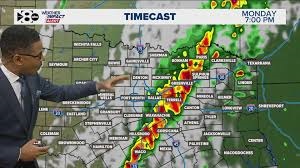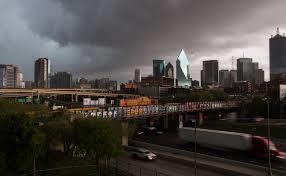Dallas weather is defined by a humid subtropical climate, featuring hot summers, mild winters, and transitional springs and autumns. Average temperatures range from 40°F in winter to 96°F in summer, with occasional extremes. The city experiences moderate rainfall, peaking in May, and occasional snowfall. Thunderstorms are common in spring, while fall brings milder conditions. Understanding Dallas weather patterns helps residents and visitors prepare for rapid shifts, such as sudden cold fronts or heatwaves. Keywords like *Dallas climate* and *seasonal weather* highlight the region’s variability, making adaptability key for outdoor plans or long-term stays.

Summer in Dallas: Surviving the Heatwaves and Humidity
Dallas summers are notoriously hot, with temperatures often exceeding 100°F and high humidity amplifying discomfort. Heat advisories are frequent, urging hydration and limited outdoor activity during peak hours. Cooling centers and shaded parks like White Rock Lake offer respite. Air conditioning is essential, and energy bills surge during these months. Keywords such as *Dallas heatwaves* and *summer safety* emphasize preparedness. Locals recommend lightweight clothing, sunscreen, and avoiding strenuous activities midday. Evenings bring slight relief, but overnight lows rarely dip below 75°F, making Dallas weather in summer a test of endurance for newcomers.
Winter in Dallas: Mild Temperatures and Occasional Ice Storms
Dallas winters are generally mild, with average temperatures around 55°F, but Arctic blasts can cause sudden freezes. Ice storms, like the 2021 freeze, disrupt infrastructure and pose safety risks. Keywords like *Dallas ice storms* and *winter preparedness* stress the need for insulated pipes and emergency kits. While snowfall is rare, black ice on roads demands cautious driving. Layers are advisable, as daytime warmth can shift to chilly nights. Festivals like the Dallas Arboretum’s holiday displays thrive in cooler weather, making winter a festive yet unpredictable season in Dallas weather history.
Dallas Weather Extremes: Tornadoes, Thunderstorms, and Hail
Dallas weather extremes include tornadoes, severe thunderstorms, and hail, especially during spring. The city lies in “Tornado Alley,” with peak activity from April to June. Hailstorms cause significant property damage, like the 2016 event costing $1.5 billion. Keywords such as *Dallas tornado safety* and *storm preparedness* underscore the importance of weather alerts and safe rooms. Thunderstorms bring lightning, heavy rain, and flash floods. Residents use apps like NOAA Weather Radar for real-time updates. Understanding these risks ensures readiness for Dallas weather’s volatile side, protecting lives and property during severe outbreaks.
How Climate Change is Impacting Dallas Weather Trends
Climate change intensifies Dallas weather patterns, with hotter summers, prolonged droughts, and stronger storms. Average temperatures have risen 3°F since 1970, increasing heat-related health risks. Extreme rainfall events, like the 2022 floods, are becoming frequent. Keywords like *Dallas climate change* and *weather trends* highlight the urgency for sustainable practices. Urban heat islands exacerbate warming, prompting tree-planting initiatives. Farmers face challenges with erratic growing seasons. By acknowledging these shifts, Dallas can implement resilience strategies, such as improved drainage systems and energy-efficient infrastructure, to mitigate climate impacts on local weather.
Monthly Dallas Weather Guide: What to Expect Year-Round
A monthly Dallas weather guide helps navigate the city’s climatic shifts. January averages 55°F, while July peaks near 96°F. Spring (March-May) brings thunderstorms, and fall (October-November) offers crisp air ideal for festivals. Keywords like *Dallas monthly forecast* and *seasonal travel tips* aid planners. December sees festive lights amid chilly 45°F days. August’s heat demands hydration, while April’s unpredictable storms require umbrellas. Tourists favor October for State Fair visits. This guide ensures preparedness for Dallas weather’s cyclical yet unpredictable nature, enhancing experiences for residents and visitors year-round.
Best Times to Visit Dallas Based on Weather Conditions
The best times to visit Dallas are spring (March-May) and fall (September-November), when temperatures range from 60–80°F. Keywords like *Dallas travel weather* and *ideal visit months* highlight these seasons’ appeal. Spring blooms at the Dallas Arboretum and fall festivals like the State Fair thrive in mild conditions. Summer’s heat deters outdoor activities, while winter’s occasional freezes limit events. Travelers should pack layers for sudden shifts, such as cool mornings warming by afternoon. Avoiding hurricane season (June-November) reduces storm-related disruptions, making Dallas weather in transitional seasons ideal for exploration.
Dallas Weather vs. Other Texas Cities: How Does It Compare?
Dallas weather differs from Texas cities like Houston and El Paso. Houston’s coastal humidity surpasses Dallas’s drier heat, while El Paso’s desert climate lacks severe storms. Keywords like *Dallas vs. Houston weather* and *Texas climate comparison* illustrate these contrasts. Austin shares similar temperatures but faces fewer tornadoes. San Antonio’s milder winters attract snowbirds, whereas Dallas sees more ice storms. These variations stem from geography: Dallas’s inland location amplifies temperature swings. Understanding these differences aids relocators and travelers in adapting to regional weather challenges.

How to Prepare Your Home for Dallas Weather Extremes
Preparing homes for Dallas weather extremes prevents costly damage. Insulate pipes to avoid winter freezes, install storm shutters for hail protection, and trim trees to reduce storm debris. Keywords like *Dallas home weatherproofing* and *storm-ready homes* guide homeowners. Energy-efficient HVAC systems combat summer heat, while sump pumps mitigate flood risks. Roof reinforcements withstand hail, and weatherstripping improves insulation. Emergency kits with flashlights, water, and non-perishables ensure safety during outages. These steps fortify homes against Dallas weather’s unpredictability, offering peace of mind year-round.
Dallas Weather Safety Tips: Staying Safe During Severe Storms
Dallas weather safety begins with vigilance. Monitor alerts via apps or NOAA radios, and identify storm shelters at home. Keywords like *Dallas storm safety* and *emergency preparedness* stress proactive measures. Avoid driving during floods—just 6 inches of water can stall vehicles. In tornadoes, seek windowless interior rooms. For heatwaves, stay hydrated and check on vulnerable neighbors. Keep emergency contacts accessible and maintain insurance for weather-related damages. Community resources, like Dallas’s Office of Emergency Management, provide updates and assistance. Prioritizing safety ensures resilience against Dallas weather’s most dangerous moments.
Conclusion**
Dallas weather offers a dynamic mix of sunny days, seasonal storms, and occasional extremes. From scorching summers to icy winters, preparedness is key to thriving in this vibrant city. By understanding climate patterns, comparing regional trends, and adopting safety measures, residents and visitors can navigate Dallas weather confidently. Whether planning a trip or fortifying a home, this guide equips you with actionable insights. Embrace the unpredictability—Dallas’s charm lies in its ever-changing skies.
FAQs
What is the hottest month in Dallas?**
July is Dallas’s hottest month, with average highs of 96°F. Heatwaves often push temperatures above 100°F, demanding hydration and sun protection. Avoid outdoor activities midday, and utilize air-conditioned spaces like malls or libraries.
Does Dallas get tornadoes?**
Yes. Dallas lies in Tornado Alley, with peak activity April–June. Residents should monitor alerts, identify safe rooms, and practice tornado drills to stay safe during severe storms.
How much snowfall does Dallas receive annually?**
Dallas averages 1–2 inches of snow yearly, though some winters see none. Ice storms are more common, causing travel disruptions and power outages.
What should I pack for a Dallas summer?**
Pack lightweight, breathable clothing, sunscreen, a wide-brimmed hat, and reusable water bottles. Evening attire remains casual due to warm nights.
Are floods common in Dallas?**
Flash floods occur during heavy rains, especially in low-lying areas. Avoid driving through flooded roads and heed barricades to prevent accidents.
When is the best time to visit Dallas?**
Spring (March–May) and fall (September–November) offer mild temperatures, perfect for outdoor festivals and sightseeing without extreme heat or cold.
How does climate change affect Dallas weather?**
Rising temperatures intensify heatwaves and storms. Sustainable practices, like reducing carbon footprints, can mitigate long-term impacts on Dallas’s climate.
What are “blue northers” in Dallas?**
Blue northers are sudden cold fronts causing rapid temperature drops. These winter gusts can lower temps by 20°F in hours, requiring layered clothing.
How do I prepare my car for Dallas weather?**
Use all-weather tires, check antifreeze levels in winter, and park in garages during hail forecasts to avoid damage from Dallas weather extremes.
Where can I find real-time Dallas weather updates?**
Use apps like Weather Underground or follow local news channels. The National Weather Service Fort Worth office provides reliable alerts for storms and advisories.